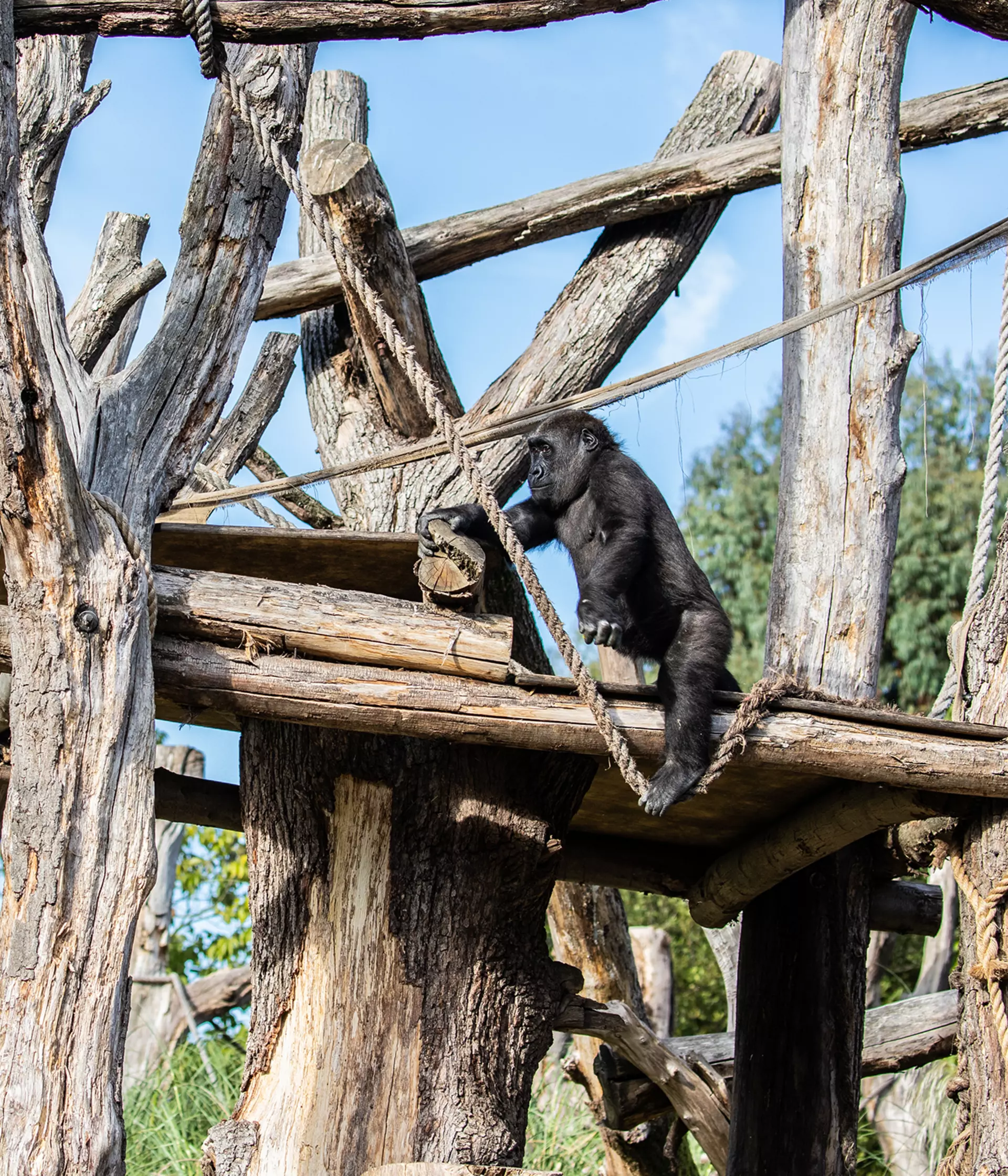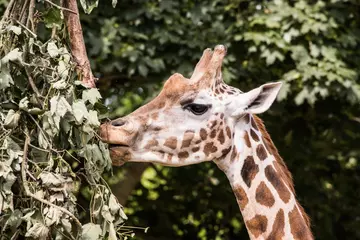
Sustainability at ZSL is extremely important across all areas of our work, and we are working hard to manage our environmental impact at ZSL across our different departments.

Horticulture Department
Though all eyes are on the animals at our Zoos, there is a vast amount of work that goes into the vegetation at London and Whipsnade Zoo. Most animal habitats need suitable foliage to create the right environments for particular species, and let’s not forget all the plant matter our grazers get through!
The horticulture department works hard to ensure that the sourcing, growing and disposal of all of this vegetation is as environmentally friendly as possible.
Part of Whipsnade Zoo is a Site of Special Scientific Interest (SSSI), and we look after this under a management plan which is approved by Natural England, but our horticulture team go even further in trying to maintain and enhance onsite biodiversity, including composting onsite, as well as growing our own plants for the animals and their habitats.
Keeping chemical use down
Growing the vast variety of healthy plants for all the different species at the Zoos, keeping down unwanted invasive species is a challenge.
Only minimal amounts of herbicides are used as a last resort for particularly resistant invasive species such as Japanese knotweed. These are applied in a very targeted way by injecting them directly into the weed plants, to reduce the amount of chemical reaching the soil. Otherwise, strimming and other mechanical control for weeds is used as much as possible.
Because of the problems that fertilisers can cause in waterways, we don't use fertiliser in the grounds of our Zoos. None of the plants are grown with mineral based fertilisers or peat-based compost, which destroys valuable peat habitats.
Finally, where we can, we’re aiming to move to use battery or hybrid vehicles, machinery or other equipment that needs to be used to take care of the Zoo grounds. This isn’t possible in all cases depending on the site’s need, but where we can, it helps minimise air pollution and use of fossil fuels.
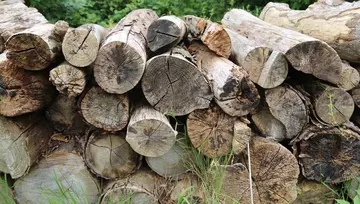
Recycling
Most of the green waste produced at the Zoos goes to good use. Waste wood is chipped to line enclosures and larger logs are piled into log stacks in the grounds to provide homes for invertebrates. The rest of the green waste is composted off site.
Water saving
Water is another valuable resource we need to use sparingly. We do not need to water plants in the grounds much, by choosing species strategically and planting at the correct times of year, as well as relying on plants natural resilience.
Procuring plants
It is difficult to find all the plants needed for all the different species at the Zoo, but the horticulture team do their best to ensure new plants are from sustainable provenance and require as little transport as possible. We source plants using local suppliers who demonstrate good environmental practice to keep the environmental impact as low as possible.
Thousands of saplings of native trees are also grown regularly to make sure the grounds are well vegetated, even if older trees and shrubs die off. In early 2017, we planted more than 2,500 native trees at London Zoo, to provide some of our plant eating animals with lots of good food.
Traditional woodland management methods are used to keep the plants in the grounds producing regular supplies of new animal fodder, and the team use plant material grown on-site to produce leaf silage for the winter months. Silage involves the fermentation of plant matter, which produced lactic acid from microbial activity. This preserves the matter well and lactic acid is digestible by animals, providing a nutritious supply of food when plant growth is low.
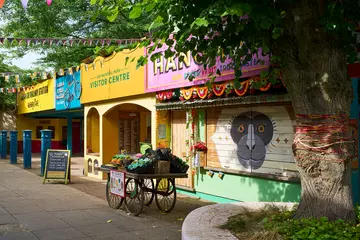
Animal habitats
Many of our animal exhibits are built and run in ingenious ways that make them much less wasteful, minimising their environmental impact and their cost. We are always seeking new ideas which we aim to incorporate where possible. Here are some of the ingenious ideas that have been put into practice to make our animal enclosures eco-friendly:
London Zoo
- In our Land of the Lions habitat, we have re-used or refurbished existing buildings where possible instead of new constructions and we have re-used materials from other buildings and exhibits, including using spare railway stock from Whipsnade Zoo to re-create the Sasan Gir railway station. We have used only FSC approved timber and we have reduced the overall energy consumption of the exhibit by 20%.
- In Gorilla Kingdom, the environment has been built using only sustainable materials, such as FSC wood and bamboo instead of steel.
- In Penguin Beach, the area was built using only FSC wood and the concrete needed was reduced by 50% by utilising waste materials. The water use when running the exhibit is reduced by refilling less often and our explainers have even been telling our visitors all about MSC fish.
- In Rainforest Life, the ceiling was built using insulating layers that UV can penetrate, to use the sun to heat the interior and reduce energy use. We also use sustainable plants and compostable banners in the habitat.
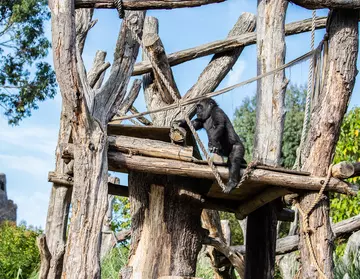
Whipsnade Zoo
- In our Hullabazoo Indoor Play area and our Aquarium, we have used floor tiles, which have been made from recycled discarded fish nets.
- We have our own small garden outside our Base Camp restaurant at Whipsnade Zoo growing herbs, fruits and vegetables to use within the kitchen.
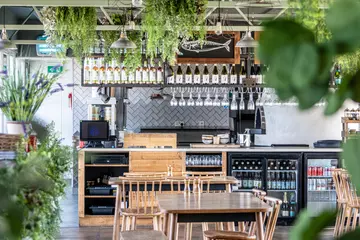
Retail and catering
It's not only the running of the animal enclosures that can have an environmental impact, we also want to make sure that the catering and retail opportunities at our Zoos are as responsible as possible.
What we offer to our visitors at the Zoos needs to support ZSL's core conservation message. We select our stock for the gift shops very carefully, and source sustainable food for our on-site cafes.
In the Retail Department, every effort is made to find products that are sustainably and responsibly produced.
A wide range of different ways of reducing the impact of catering for so many people are used in our cafes and restaurants:
- London and Whipsnade Zoos have become the first in the UK to remove all single-use plastic water bottles from shelves, as part of the #OneLess campaign to protect the world’s oceans from the devastating impacts of plastic pollution.
- We have our own small garden at Whipsnade Zoo growing herbs, garlic, radishes, pumpkins and other food to use within the café kitchen.
- We use local suppliers where we can. At Whipsnade, all our meat is supplied through a local butcher who sources our fresh meat we use from within a 45 mile radius of the zoo. A local farm supplies our milk, fruit and vegetables. We reduce the amount of deliveries we have coming onto site where we can, but still ensuring we are giving a fresh produce to our customers.
- ZSL is committed to sourcing fish from sustainable stocks throughout the Society and particular for use in the catering and animal departments. Both London and Whipsnade Zoo only use Marine Stewardship Council (MSC) certified fish produce within the catering operation. We are working towards ensuring that only sustainable palm oil is used in all products we purchase including food products, animal feedstuff and cleaning products. We support sustainable palm oil, timber, pulp and paper through our Sustainability Policy Transparency Toolkit (SPOTT), our projects in Indonesia and Cameroon, and as members of the Roundtable on Sustainable Palm Oil (RSPO) and the Forest Stewardship Council (FSC UK).
Our Policies and Codes of Conduct
ZSL's Sustainability Report
ZSL's Environmental Policies
- Read our Environmental Policy
- Read our Palm Oil Position Statement
- Read our Sustainable Timber & Paper Policy
- Read our Carbon Reduction Plan
ZSL's Supplier Code of Conduct
ZSL is committed to ensuring that its mission and values are reflected in the suppliers with whom it does business, and in the products and services it procures. Read our Supplier Code of Conduct.
Managing Eco-Friendly Estates
One of the central ways in which ZSL practices sustainability is through the reduction of our electricity and water use and our waste production, which is all thanks to our estates managers. We have an ISO14001 standard Environmental Management System.
